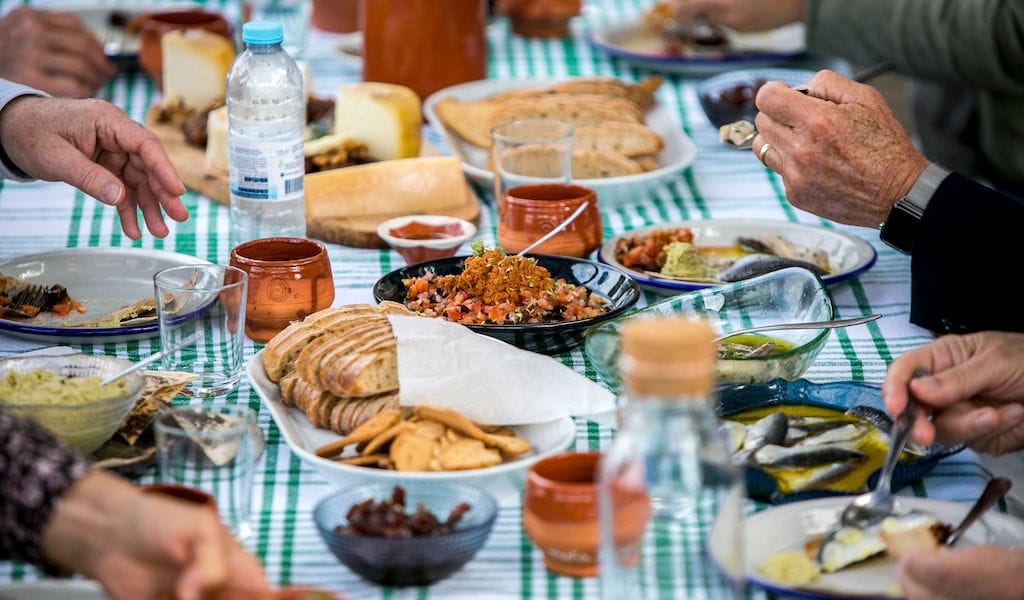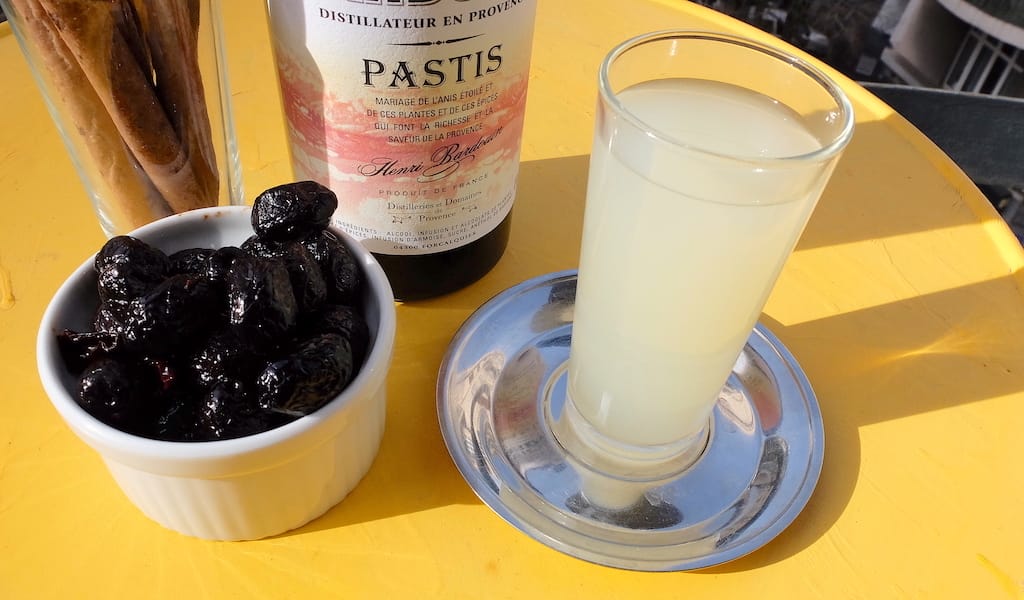A bit like 2018, we saw a lot of old and traditional places closing in 2019, with many others threatened with closure – like Casa Cid, a tasca that has been operating since 1913. An investment group bought the building where the tasca is located and will turn it into a luxury hotel, forcing the tasca out in February; in response, the family behind Casa Cid launched a petition that calls for “more pork crackling less phony gourmet stuff.”
Dozens of new places have opened in Lisbon, and while many are not successful, there are some that sparked our interest. We ate at amazing social projects like É Um Restaurante, and modern tascas. And the city keeps drawing in international chefs like the talented Estanis Carenzo (with his Asian project Rei da China) or the lisboeta Nuno Mendes, who is leading BAHR, the fine-dining restaurant at Bairro Alto Hotel, while still living in London.
The year ended with the much-anticipated opening of Fogo by Alexandre Silva, who seems to be on fire with his new project of cooking with a wood-fired oven and grill. But many of his fellow chefs might not be able to stand the heat. Is there room for so many new restaurants in a city whose residents are moving to the suburbs where more affordable rents can be found?
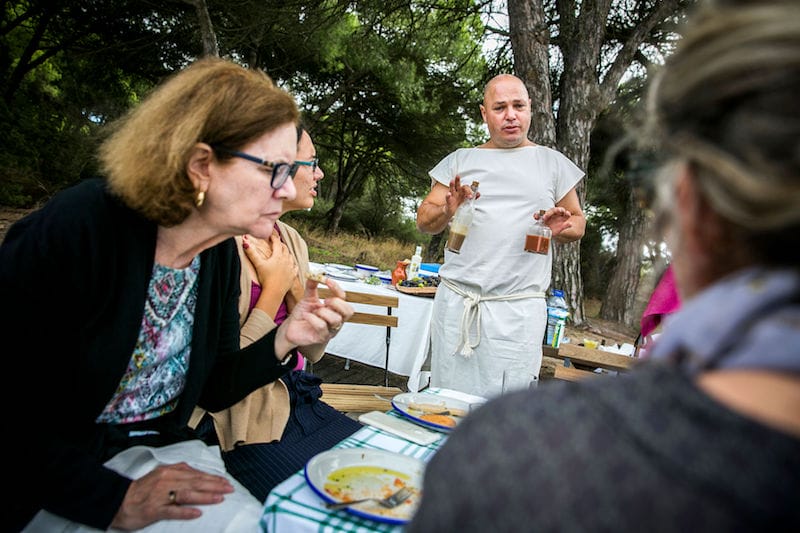
Habemus Garum!
I’m familiar with fermented fish sauce from Thailand and Vietnam, and there’s one producer in Cádiz, Spain, that I’d heard of, but it’s not really a thing in Portugal. But it came up in conversation with chef Filipe Rodrigues (from A Taberna do Mar), and we both geeked out over the possibility of recreating garum (the ubiquitous fermented fish sauce used by the Romans) to be eaten with his fish dishes at the ruins of Tróia, the largest production center of this smelly specialty in the Roman Empire. But after some experiments and tinkering, he said that he couldn’t get it to work, so that was that.
So imagine my surprise when, on our multi-day Lisbon trip, he put two little jars of garum on the makeshift table we had set up in Tróia, overlooking the Sado river and the city of Setúbal. As Patrícia Brum, the archeologist who welcomed us to the site, said, “Habemus garum!” (“We have fish sauce!” in Latin.) Tasting this pungent sauce in an ancient setting was as exciting for me as it was for our guests: It’s fishy, but in a nice way, with an umami flavor enhancing the fishiness. Having such experiences while working makes me feel very lucky and privileged.
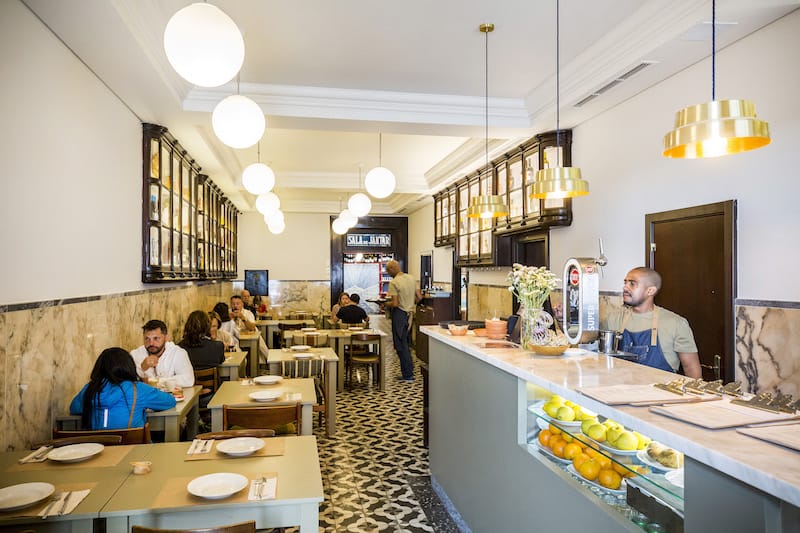
The Holy Trinity of the Algarve at Taberna Albricoque
Since my childhood, the Algarve was never just a holiday destination: It was also a place to catch up with relatives, friends or cousins (my grandfather was from Silves). It meant the freedom of endless beach days and long fish lunches that would end inevitably with local desserts, handmade by the hosts: almond, carob and fig cakes, the holy trinity of sweets in the Algarve.
In addition to noshing on homemade versions, we would often buy these cakes from specialty bakeries. But with the changes in the Algarve, particularly the boom in tourism, many traditional sweet shops simply disappeared. So it was such a joy to find this trilogy of flavors at Taberna Albricoque. Besides the fig, almond and carob cakes, the tangerine and orange sorbets also brought me back to the Algarve. So much so, I had to refrain from crossing the road and hopping on the train to Faro.
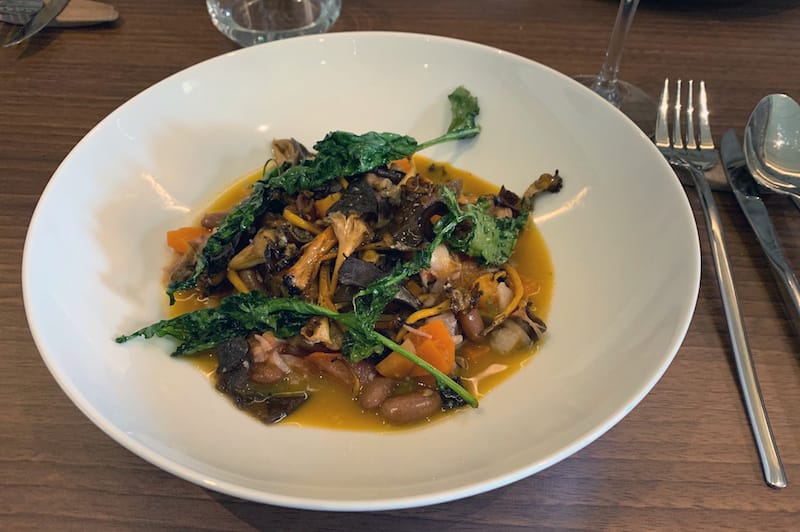
Mushroom Stew at Almeja in Porto
Porto is always a fabulous destination for unforgettable meals but I didn’t imagine I would appreciate the pure joy of stewed mushrooms with beans and a delicious broth as much as I did. It was the precursor to a meat stew with mashed potatoes, and while they were equally excellent, all I can think about when I think of Almeja, led by young chef João Cura, are those mushrooms. On a cold and sunny spring day, what else could you ask for? Maybe a glass of red wine from the Douro, bread, dessert and coffee, all of which I got for only €15. This was surely one of the best value meals of 2019. May Almeja live a long life.
– Célia Pedroso

Roasted Chestnuts with Senhor Ze
Like many a lisboeta, I eat at the same tasca most days. It’s a small place with a few tables and a bar, decorated with old football flags, whiskey bottles, dark brown tile work and a wall-mounted sobremesa cooler. From my spot at the bar, I see Senhor Ze behind the counter cutting bread and fishing olives out of a big tub, I hear the cackle of Senhora Cão and her daily lunch gang of retirees at their table behind me, on the TV is the same variety show featuring duos from the North crooning before a studio audience, on my plate is a grilled fish and boiled vegetables or maybe a hamburger topped with a fried egg. It’s numbingly predictable but a comforting dining experience that I’ve come to depend on.
One day in November, however, the tasca was overcome with a festive mood. When I sat down, Senhora Cão quickly approached, speaking rapid-fire about chestnuts, today’s lunch special and São Martinho. Senhor Ze spun around and handed me a glass of wine, unprompted (Senhor Ze, as a rule, does not do freebies) and asked me if I’d ever seen chestnuts in their husk, most people never had, he said. Senhora Cão’s face lit up, darted out to the next room and returned carrying a decorative bouquet of chestnuts in their spiky case. Everyone at the counter was then given a glass of the fizzy, watery wine, or agua-pe, which Senhor Ze took a swig from explaining that it was a tradition of this day, the dia de São Martinho (St. Martin’s Day). Then came another freebie, a plate of roasted chestnuts which Senhor Ze, Senhora Cão and I shelled and ate, washing the pasty mash down with our complimentary agua-pe, enjoying a quiet moment together, celebrating, almost in secret. When the glasses were empty, the show was over. I ordered the special, roasted pork loin with chestnuts, as instructed, and it was as good as always, but with chestnuts.
Aside from the feast of Santo António in June, Lisbon is not a place of public spectacles. Most days, holiday or not, pass with regularity, or seem to, at least. Then someone unexpectedly opens the door and pulls you into a simple embrace sharing what little they have with you, a subtle gesture so genuine and joyful it could make you cry. That constitutes the highlight of a year spent in the tasca of Senhor Ze. I’ll take that over a grilled sardine at a street festa any day.
– Ansel Mullins
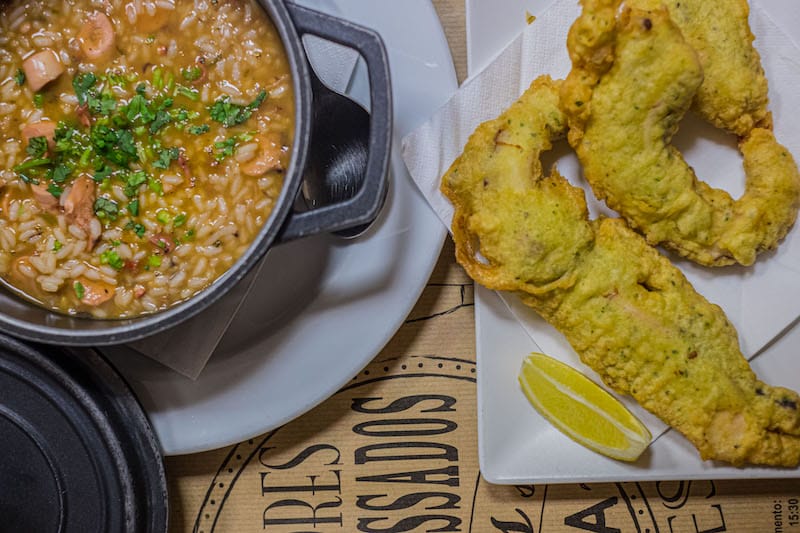
Fried Octopus at Adega da Bairrada
I’ve been a regular at Adega da Bairrada for quite some time. It’s one of my go-to places whenever I need reassurance that 70-year-old tascas can still thrive in this city. But for some odd reason, I had never gone there on a Thursday before this year. I went there often on Wednesdays because of the famous cozido à portuguesa (meat and vegetable stew), and Fridays because of another classic, enchidos com grelos (traditional sausages served with turnip greens). Thursdays? Not that I remember.
So, as I was preparing to write about it for CB, I went there – by chance – on a Thursday, only to learn that one of their Thursday specials is also one of my favorite dishes: fried octopus with octopus rice. A dish that is typical of northern Portugal, thus not so easy to find around here. The discovery made me feel a mix of pleasure and pain. Pleasure to learn that, after all, one of my favorite places served this dish (and I was about to eat it) and pain because I had been stupidly missing out on it for so long. Anyway, I ordered the special, and when they served it all the pain was washed away. The octopus fillets were remarkably well fried, and the soupy rice that came along with it, laden with bits of the same octopus, was a thing of beauty. Since then, I’ve been going back even more often. Thank you for that, Culinary Backstreets.
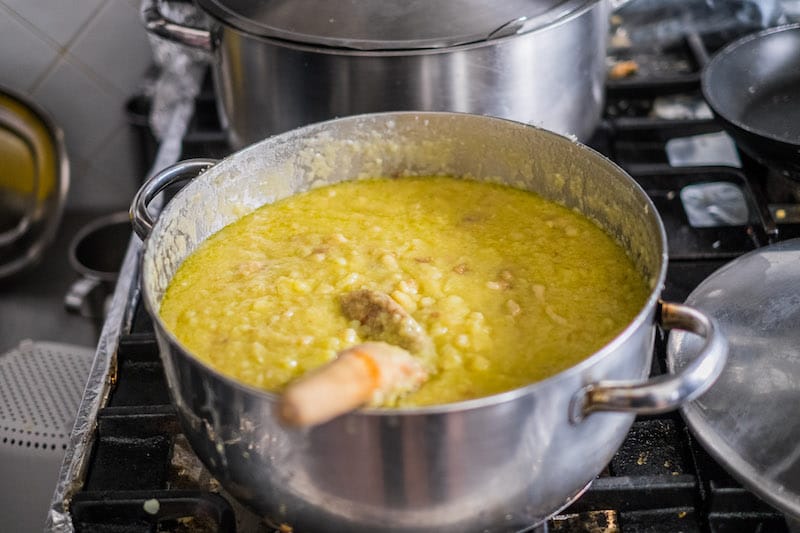
Manja at Granja dos Moinhos
For quite some time I’ve been working on a project with Michelin-starred chef João Rodrigues that involves traveling across the country, meeting and spending time with producers, documenting their activities and building a database of all the great products we have in Portugal. Most of the time we end up eating with these men and women as well, which – obviously – is the best part of the gig. There have been some very memorable meals lately, like the one we had with Adolfo Henriques last March. Adolfo is a chèvre cheese producer who owns a small farm called Granja dos Moinhos in Maçussa, a tiny village 70 km north of Lisbon. He usually receives guests for lunch if they call in advance (+351 919 474 476) and almost always prepares the same dish he made for us. It’s called manja, a recipe that I wasn’t acquainted with but is an old tradition in his region.
Like the famous açorda in the Alentejo, manja is an example of culinary creativity imposed by harder (i.e. poorer) times. It’s a kind of salty stew made of bread (which Adolfo also makes himself, with a special wheat called barbela), potatoes and lots of olive oil, which cooks slowly and steadily until reaching a specific porridge-like consistency. It was absolutely delicious. We ate it with grilled codfish, but in the summer it goes very well with sardines. It was, once again, proof that in this country we are very good at making a lot out of (almost) nothing.

Rababkanada with Cardamom Ice Cream at Isco
Portugal is far from a gluten-free country – I’d even go so far as to say it’s a gluten-freak one. We eat bread at almost every meal. We eat it with butter or olive oil before the main dish and also use it to mop up every bit of sauce in many of our dishes, a tradition we share with the Italians (who call it “fare la scarpetta,” or “make a little shoe,” as the fingers play the role of legs). But for a long time, at least in the big cities, the quality of bread available didn’t match this passion as most of it was baked on a large scale by industrial bakeries. Then came a revolution: Young bakers, inspired by the artisanal bread movement in northern Europe, started to open new bakeries with racks filled with excellent sourdough bread.
Isco was one of those. It opened in late 2018 and immediately attracted many gluten-loving customers who also appreciated its assortment of Nordic-influenced pastries, especially the cardamom buns. But Isco is not your usual neighborhood bakery. Oftentimes there is someone in the back cutting fresh pieces of meat, because they also serve lunches and dinners in a relaxed, uncompromising bistro-like style.
Their desserts are always good. But one time, last May, the dessert was better than good. The menu read rababkanada. Being a fan of the traditional Portuguese rabanada (our special kind of French toast), I obviously ordered it. I didn’t really expect what came out: a beautiful, sweet and tender piece of rabanada made with old babka instead of old bread that almost melted in the mouth. The cardamom ice cream balanced it perfectly. They haven’t done it since but I smile every time I remember it and still hope I’ll get a chance to taste it again.
– Tiago Pais
 August 27, 2012 Meşhur Unkapanı İMÇ Pilavcısı
August 27, 2012 Meşhur Unkapanı İMÇ Pilavcısı
Late one night, zipping down a busy Istanbul thoroughfare in a taxi on our way home from […] Posted in Istanbul May 5, 2020 Recipe
May 5, 2020 Recipe
Legumes have been at the core of the Greek diet since antiquity, with chickpeas being […] Posted in Athens February 12, 2021 Liquid Assets
February 12, 2021 Liquid Assets
In Marcel Pagnol’s iconic 1930s Marseille trilogy, dockworkers sip pastis at Bar de la […] Posted in Marseille
Published on December 23, 2019
Related stories
August 27, 2012
IstanbulLate one night, zipping down a busy Istanbul thoroughfare in a taxi on our way home from the airport, we passed an intriguing scene. Huddled around a brightly lit food cart was a large group of men stuffing their faces in a kind of zombie-like frenzy. It almost looked like a scene out of Night…
May 5, 2020
AthensLegumes have been at the core of the Greek diet since antiquity, with chickpeas being especially popular. We find references to them, and the ways they were cooked, in the works of several ancient writers and poets, including Homer, whose epic poems provide insight into the eating and cooking habits of the time (roughly the…
February 12, 2021
MarseilleIn Marcel Pagnol’s iconic 1930s Marseille trilogy, dockworkers sip pastis at Bar de la Marine, a Vieux-Port bar that still stands today. Later in the century, pastis is as prominent a character as its star, Detective Fabio Montale, in Jean-Claude Izzo’s 90s Marseille noir crime novels. The city’s quintessential quaff is as popular as ever…







































